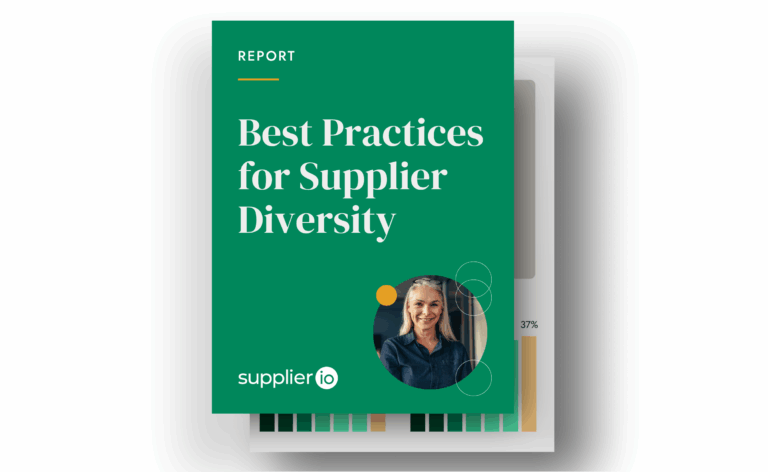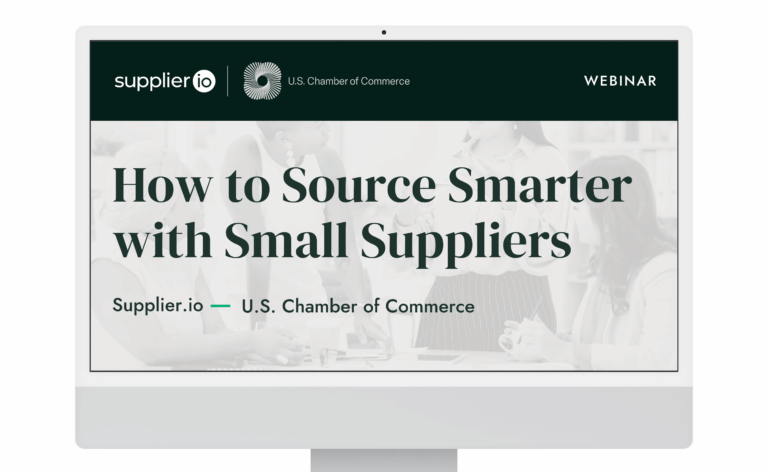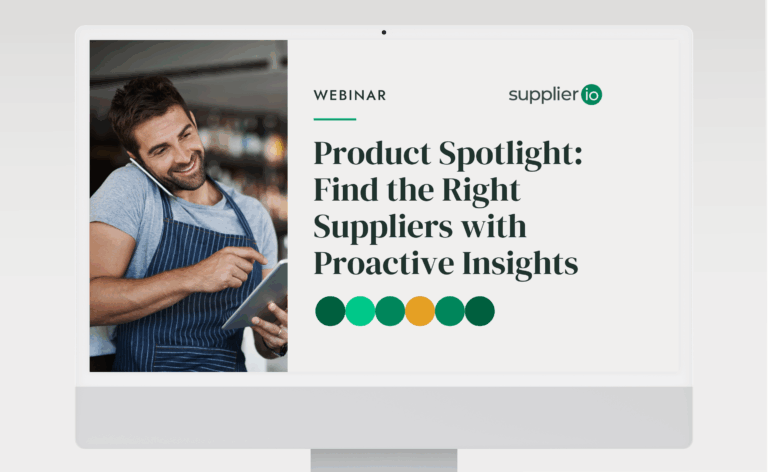Beyond Good Intentions: The Tangible Business Case for ESG-Focused Procurement
ESG principles in your supply chain can generate real, measurable business benefits. Learn how ESG contributes to your roadmap to success.

Smart procurement leaders recognize that achieving long-term business success and prioritizing positive social and environmental impact are two sides of the same coin. By putting Environmental, Social, and Governance (ESG) principles at the heart of their supply chains, they generate real, measurable benefits. In today’s competitive market, a commitment to ESG isn’t just the right thing to do – it’s a strategic advantage that translates into a stronger bottom line.
ESG From Values to Value Creation
While ESG might have started as a “box to tick,” forward-thinking companies see the competitive advantage of a truly sustainable supply chain. It means greater efficiency, lower costs, better relationships with stakeholders, and ultimately, a healthier, more profitable business.
Consider this: By 2026, 70% of Technology Procurement Leaders will have Environmental-Sustainability-Aligned Performance Objectives (Gartner )
How ESG Contributes to the Bottom Line
Let’s look at the specific ways ESG-focused procurement delivers tangible business value:
Operational Efficiency Gains: Partnering with suppliers who share your commitment to sustainability often leads to streamlined processes, waste reduction, and lower energy costs. Think of it this way: finding suppliers who care about reducing their environmental impact can mean cost savings for you on energy and materials. Similarly, working with suppliers who treat their people well can prevent disruptions in your supply chain due to labor problems.
Sustainability pays off: 60% operating cost reduction. Executing ESG effectively can help combat rising operating expenses (such as raw-material costs and the true cost of carbon), by as much as 60 percent. (McKinsey)
Cost Savings and Innovation Boost: Prioritizing ESG principles encourages the adoption of circular economy practices, leading to reduced material and waste disposal costs. Furthermore, collaborating with sustainability-minded suppliers can spark innovation in product and packaging design and more, further enhancing your competitive edge.
Unlock hidden value: 32% material reduction. The circular economy could result in a reduction of primary material consumption by 32% by 2030. (Ellen Macarthur Foundation)
Reputation is Everything: Let’s face it, people have choices these days. They want to support companies they feel good about. By championing ESG, you build trust and a stronger reputation – the kind that attracts new customers and keeps them loyal. This positive image can even lead to the ability to charge a bit more for products or services that are ethically sourced and environmentally friendly. It’s a win-win for everyone.
Build a brand customers believe in: A staggering 76% of consumers would cease buying from companies that neglect environmental, employee, or community well-being, highlighting the direct impact of ESG practices on consumer behavior. (PWC)
Risk Mitigation for Long-Term Stability: Proactively addressing ESG factors in your supply chain allows you to identify and manage potential risks that could disrupt operations or damage your reputation. This includes everything from labor practices to environmental impact, safeguarding your company from costly fines, lawsuits, or negative publicity.
Future-proof your operations: $1.3 trillion climate-related costs. By the year 2026, it is expected that climate-related weather events will cost suppliers a staggering $1.3 trillion. (CDP)
Attracting Investors and Capital: By implementing robust ESG practices throughout your supply chain, you empower your company to tell a compelling sustainability story. A strong procurement driven ESG track record positions your company for better access to capital and potentially more favorable financing terms.
Position your company for growth: 89% of investors consider ESG issues when making investment choices. (ESG investing statistics 2023 (Bankrate)
The Call to Action: Your Roadmap to ESG-Driven Success
The business case for integrating ESG is undeniable. Now is the time to turn that commitment into tangible results. Here’s a high-level roadmap to get you started:
- Set Clear ESG Targets: Define specific, measurable objectives aligned with your company’s goals and commitments (e.g., waste reduction, carbon emissions goals, labor standards). Formalize these targets in your procurement guidelines and supplier selection processes.
- Empower Your Team: Equip your procurement team with the knowledge and tools they need. Invest in training on ESG principles, best practices, and evolving regulations.
- Assess and Prioritize: Evaluate your suppliers’ ESG performance. Use verifiable third-party data, ESG risk assessments that align to the UN’s Sustainability Development Goals, and direct engagement to identify risks and opportunities. Prioritize suppliers based on spend, strategic importance, identified risk or potential for positive impact.
- Forge Strategic Partnerships: Collaborate with suppliers to drive improvements, set targets, and implement initiatives. Offer support to help them strengthen their own ESG practices.
- Track Progress, Demonstrate Results: Measure your supply chain’s ESG performance against your goals, conduct regular audits, and communicate your progress transparently to build trust and credibility.
Want to dive deeper into how procurement teams are driving ESG success, join the Hackett Group’s Kurt Albertson and industry veteran Shelly Brown for a brief webinar on Sustainability in Procurement: Driving Business Value Creation and Managing Risk.




